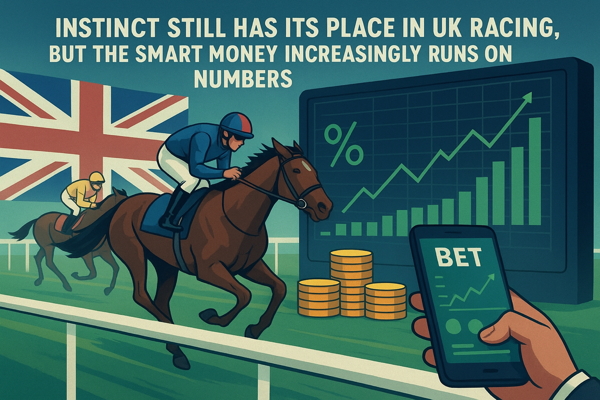 |
RacingBetter News |
| Wednesday 10th September 2025 | |
Setting Odds with Data, The Future of UK Horse Racing

Instinct still has its place in UK racing, but the smart money increasingly runs on numbers. Data analytics, live betting flows, and quiet bits of automation now shape the prices punters see. It all hums away in the background at Cheltenham, Ascot, and the midweek cards that rarely make headlines. Today’s odds fold in past runs, track bias, the weather that might turn, and whatever the market whispers in real time.
Bookmakers react quickly. The room for sloppy pricing seems to shrink with each season, which nudges expectations higher. Every runner, every market, every flicker of a price is sifted through fresh data. Racing feels different. Data-led pricing is not a side note anymore, and it is likely to matter even more tomorrow.
Where the numbers really start to matter
UK layers have rebuilt the old chalk board with code. Automated feeds, live models, and around-the-clock market watching now do the first pass on prices. Flat or jumps, marquee cards or low-key meetings, each has its own data fingerprint. Past performance, distance and draw, rider records, sectional times, ground updates, and the latest forecast all feed in. Then the money moves and the screens twitch. Software nudges prices in step with the market so margins are protected and the book does not drift out of shape.
One idea has not moved an inch: the overround. By keeping total implied probabilities above 100 percent, bookmakers keep the long-term tilt on their side. Swings happen, shocks arrive, but risk is moderated. What is new is the blend. Automation, deep datasets, and tighter risk controls are raising the bar for accuracy and adaptability. Results can look tidy on paper. On the track, it is still a game of edges and thin lines.
Markets, prices, and how they keep shifting
Sites tracking horse racing odds have grown more sophisticated as well, reflecting deeper competition and a rush of new technology.
As money comes in, prices rebalance. Favourites shorten, outsiders drift, sometimes the reverse when a whisper turns loud. Big sportsbooks fuse their own models with what the market is signaling, chasing sharper lines and fewer giveaways. A lot of the easy angles punters once found have thinned out, if not disappeared, at least on the surface.
Betting exchanges in the UK add another layer of clarity. Recent seasons suggest the crowd processes news fast, from a sudden downpour to a late non-runner. Prices echo both modelling and sentiment, often within minutes of fresh information landing. Older studies flagged biases that hung around; newer work hints the market adjusts quicker and leaves less on the table. Not perfectly efficient, perhaps, but closer than it used to be.
Tech and the evolving punter’s toolkit
Mobile-first and automation have changed how people bet, not just where. Form tools, live price trackers, and algorithm-led tips are a tap away. Builders for complex bets are standard. Punters can scan markets for the next to jump, each-way angles, winning margins, or match-ups without leaving the screen.
With so much online volume, in-play prices budge mid-race as the picture changes. Behind the curtain, algorithmic risk systems work to keep the book balanced and the outliers in check. It is less about gut feeling and more about speed and depth. The best odds-compilers chase quicker signals, cleaner data, and a market that keeps moving. Fans get more numbers than ever and more ways to make them useful.
What might be next for UK racing
There is still headroom. Machine learning, broader AI, and richer biometric inputs could sharpen both pricing and punter tools. Online volume shows little sign of easing. New products and timely alerts may push still greater transparency, along with tighter competition. Regulators, it seems, will keep a close watch so the race stays fair and safe.
For most bettors, that likely means clearer angles to view a market, quicker insight, and more ways to structure a bet. The challenge is different than it was. Beating the line takes skill and timing, not just hunches. As the grandstands and the trading rooms continue their digital shift, data sits in the middle of a faster, arguably fairer, and more competitive scene.
One last point. Betting on racing remains popular, but it calls for care. Set a budget, keep to it, and accept that no model guarantees a profit. If wagering stops feeling like entertainment or starts to affect well-being, support is available from groups focused on responsible gambling. The sport thrives on anticipation and joy, and it should stay that way.







